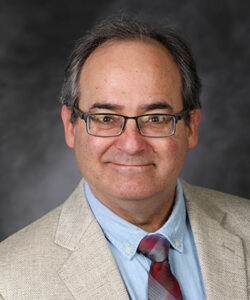UND research and North Dakota: Space & national security
Just as North Dakota has become a UAS hub, so, too, can it become a center for space and national security research, UND leaders say

Editor’s note: In this special issue, UND Today is highlighting the statewide impact of UND researchers and research. We’re doing this by publishing roundups on five key North Dakota topics, including Rural Health, Autonomous Systems and Western North Dakota. Then in each roundup, we’re listing and linking to recent UND Today pieces that show how the University’s work is affecting that topic.
This story: Space & National Security
As every UND aerospace student knows, John Odegard pioneered UND’s aviation program with two donated aircraft. The Odegard School of Aerospace Sciences today operates one of the largest fleets of civilian aircraft in North America and is known worldwide for its aviation-industry training programs.
Now, we can expect eyes at the school to be turned even further skyward, if recent developments are any indication. That’s because a parade of high-level visitors to UND over the past year is pointing to very high-flying things to come.
“It’s a critical and exciting time to be in the space business,” said Gen. John W. “Jay” Raymond, U.S. Space Force commander, during his January 2020 visit to UND.
“There is a lot of great research going on; there’s a Space Studies program here. As we develop future Space officers, I think this school has a great opportunity.”
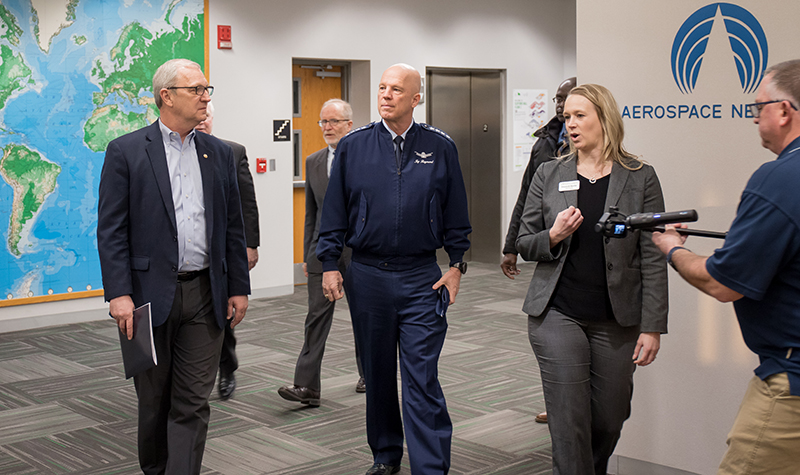
Raymond’s visit was documented in a UND Today story, Leader of newly formed Space Force visits UND. A few months earlier, as UND positioned for future space exploration reported, NASA administrator Jim Bridenstine had visited.
“The University of North Dakota is delivering — on behalf of NASA — technology that is helping us understand the earth, helping us understand the earth’s atmosphere, helping us better predict weather events and the climate,” Bridenstine said during his visit. “Beyond that, the University of North Dakota is helping us with human space flight.”
September brought a visit by Gen. James Dickinson, the new commander of the U.S. Space Command. As described in To North Dakota and beyond, Dickinson liked what he saw: “I will tell you those young cadets coming through the university here – soon to be officers – we will absolutely look to those types of individuals to be part of not only the U.S. Space Force, but what I’m responsible for, which is the United States Space Command,” he said.

Then in October came the director of the U.S. Space Development Agency, Derek Tournear. Tournear, too, “was upbeat about the potential role the University and the surrounding unmanned aircraft systems ecosystem could play in developing a national space defense system,” reported the UND Today story, UND experts could drive satellite defense system.
These leaders visited UND for the same reason that John Odegard’s original idea gained such strong support: space in 2021, like aviation in 1968, represents a growth opportunity and a chance to further diversify North Dakota’s economy.
“I’ve quipped that I’d like us to launch satellites from Grand Forks, but please don’t take that literally,” UND President Andy Armacost said in his Oct. 27 message to campus. “A more practical goal is to design, build and control satellites after they’re launched into orbit elsewhere aboard a commercial space vehicle.”
That’s not an impossible dream, nor is it unrealistic for UND to pursue an invaluble Department of Defense designation as a University Affiliated Research Center. “Consider all the work we can do at UND with our air-based autonomous systems to test technologies and procedures for future systems operating autonomously in space,” he said.
“There’s a promising frontier right in front of us. Let’s use the creative and scholarly talent of our faculty, students, and staff to make some magic happen.”
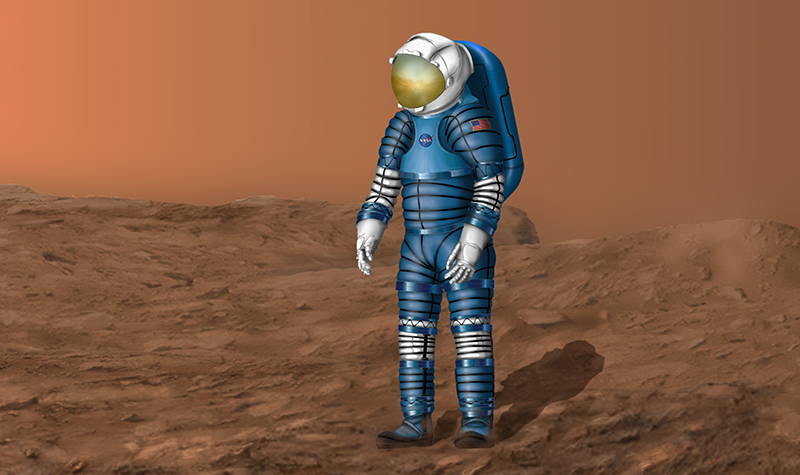
Pablo de León, Professor and Chair of UND’s Department of Space Studies, already is doing that and more. Thanks to de León’s leadership, “the spacesuits of the future are being designed at the University of North Dakota, in the Human Spaceflight Laboratory,” as UND teams with NASA for paradigm shift in space exploration describes.
Also thanks to de León and as noted in the above story, the department’s Lunar/Mars Inflatable Habitat, located on the edge of the UND campus, “regularly trains future space explorers and informs UND researchers on the challenges and isolation of prolonged living and working in space.”
One such mission brought four students from Argentina, Colombia, Mexico and Peru to the Inflatable Habitat, where they spent two weeks running experiments to help NASA with exploring the moon and Mars. “It’s one of the greatest habitats that I’ve ever been in,” said Mission Commander Danton Bazaldua, an engineering student at the National Autonomous University of Mexico, in the October 2019 UND Today story, Down-to-earth international space exploration.
National security is another expanding area of focus for UND, one that overlaps with the space developments. After all, the U.S. Space Force’s purpose is not to explore space, but to protect America’s assets in space, Gen. Raymond said during his visit.
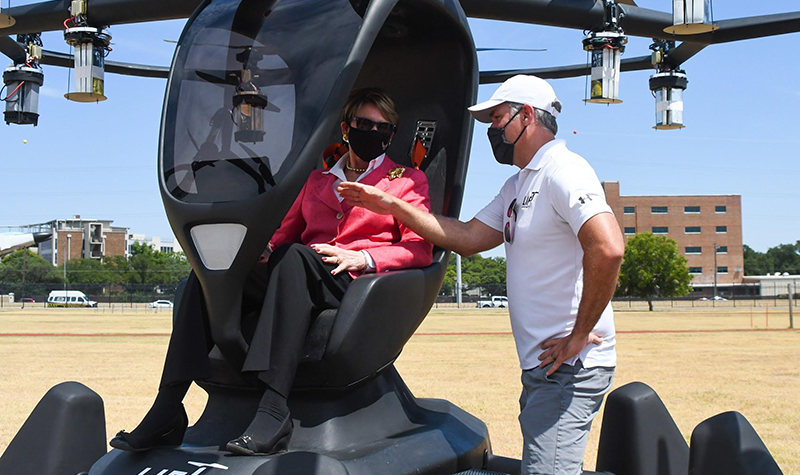
A few layers down in the atmosphere, the Air Force fulfills its own national security role, and depends in part on universities such as UND for research. The work benefits all: For example, as UND awarded Air Force ‘Agility Prime’ contracts explains, UND’s role in Air Force’s Agility Prime “flying car” research will not only help the Armed Service, but also further grow North Dakota’s UAS ecosystem, a significant statewide benefit.
And as noted in UND to develop augmented reality system for Humvees, published as recently as Jan. 7, UND now is bringing its autonomous-technology expertise to ground vehicles – specifically, the Humvee, the iconic tactical vehicle widely used by the U.S. military.
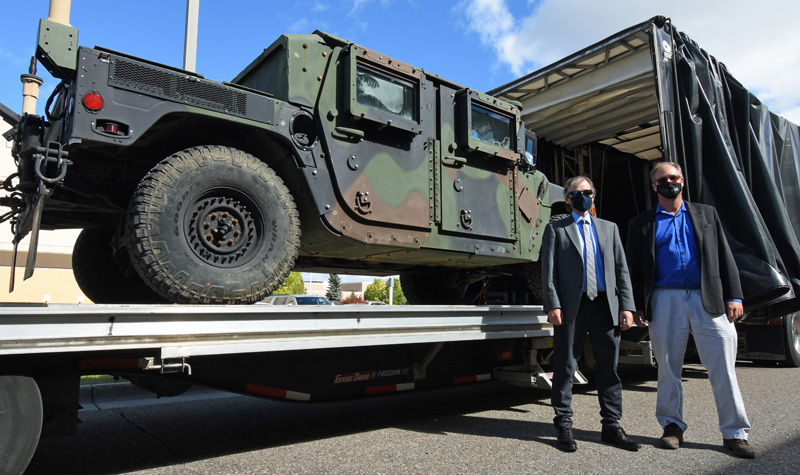
“We’re proud to have pioneered the development of autonomous technology in aircraft, and we’re thrilled to now be doing the same in ground vehicles,” says Mark Askelson, Executive Director of UND’s Research Institute for Autonomous Systems, in the story.
But even more rewarding is the sense of service that the Humvee work is delivering, Askelson continues.
“At the end of the day, what really excites me about this work is us bringing our skill set to bear on problems are facing the Department of Defense,” he says. “We can solve these very real problems that are affecting people in the field. We can help the operators execute their missions with greater safety and more efficiency. And that gets all of us pumped up.”
